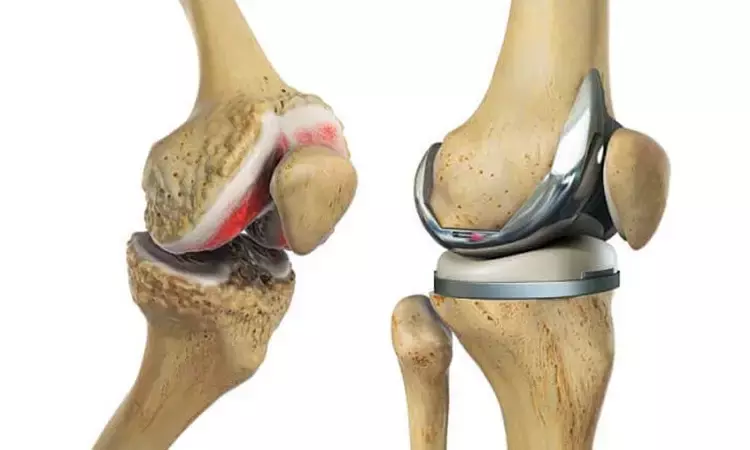- Home
- Medical news & Guidelines
- Anesthesiology
- Cardiology and CTVS
- Critical Care
- Dentistry
- Dermatology
- Diabetes and Endocrinology
- ENT
- Gastroenterology
- Medicine
- Nephrology
- Neurology
- Obstretics-Gynaecology
- Oncology
- Ophthalmology
- Orthopaedics
- Pediatrics-Neonatology
- Psychiatry
- Pulmonology
- Radiology
- Surgery
- Urology
- Laboratory Medicine
- Diet
- Nursing
- Paramedical
- Physiotherapy
- Health news
- Fact Check
- Bone Health Fact Check
- Brain Health Fact Check
- Cancer Related Fact Check
- Child Care Fact Check
- Dental and oral health fact check
- Diabetes and metabolic health fact check
- Diet and Nutrition Fact Check
- Eye and ENT Care Fact Check
- Fitness fact check
- Gut health fact check
- Heart health fact check
- Kidney health fact check
- Medical education fact check
- Men's health fact check
- Respiratory fact check
- Skin and hair care fact check
- Vaccine and Immunization fact check
- Women's health fact check
- AYUSH
- State News
- Andaman and Nicobar Islands
- Andhra Pradesh
- Arunachal Pradesh
- Assam
- Bihar
- Chandigarh
- Chattisgarh
- Dadra and Nagar Haveli
- Daman and Diu
- Delhi
- Goa
- Gujarat
- Haryana
- Himachal Pradesh
- Jammu & Kashmir
- Jharkhand
- Karnataka
- Kerala
- Ladakh
- Lakshadweep
- Madhya Pradesh
- Maharashtra
- Manipur
- Meghalaya
- Mizoram
- Nagaland
- Odisha
- Puducherry
- Punjab
- Rajasthan
- Sikkim
- Tamil Nadu
- Telangana
- Tripura
- Uttar Pradesh
- Uttrakhand
- West Bengal
- Medical Education
- Industry
Bone scintigraphy combined with integrated SPECT/CT advantageous in differentiating prosthetic infection from loosening: study

Prosthetic loosening and infection are still common complications after joint replacement. Over the past few years, single-photon emission computed tomography–computed tomography (SPECT/CT) was widely used and showed unique value based on the combination of anatomic and metabolic information of foci. However, its performance in differentiating between prosthetic loosening and periprosthetic infection after joint replacement is still the focus of clinicians and deserves further investigation.
Yaxin Tian et al conducted a retrospective study to determine whether bone scintigraphy combined with SPECT/CT still can differentiate prosthetic infection from loosening in patients after joint replacement. The differential efficacy in hip and knee prosthesis was also analyzed. Blood biomarkers for the diagnosis of periprosthetic infection were also evaluated.
The study was conducted at Ningxia Medical University, Yinchuan, China. It was published in “Indian Journal of Orthopaedics.”
Data sets of 74 prosthetic joints (including knees and hips), with suspected prosthetic loosening or infection were evaluated. Besides the results of nuclear imaging, X-ray images and serum biomarker were also recorded. Telephone follow-up and revision surgery after SPECT/CT were used as a gold standard. The sensitivity and accuracy of different imaging modalities were calculated by Chi-square test. The diagnostic efficacy of imaging methods and serum biomarkers were then analyzed by the area under curve (receiver operating characteristic curves, ROC) in SPSS 26.
The key findings of the study were:
• In all, 47 joints (14 knees and 33 hips) were confirmed as aseptic loosening, while 25 joints (18 knees and 7 hips) were confirmed as infection.
• The sensitivity and accuracy of SPECT combined with SPECT/CT imaging were the highest (92.86% and 87.84%, respectively).
• The differential efficacy of bone scintigraphy combined with SPECT/CT imaging was also better than any other single imaging modality.
• In the analysis of involved prosthesis, prosthetic loosening occurred more in hip prosthesis and knee prosthesis was easily infected (P<0.05).
• The sensitivity of ESR and CRP were 80% and 84%, respectively.
The authors concluded – “Bone scintigraphy with hybrid SPECT/CT remains encouraging in differentiating prosthetic infection from loosening after joint replacement. The diagnostic efficacy of differentiation in hip prosthesis was better than knee. Serum biomarkers cannot be used alone to differentiate prosthetic infection from loosening.”
Further reading:
Can99mTc MDP–SPECT/CT Differentiate Loosening and Infection After Hip and Knee Replacements? Yaxin Tian, Yanghongyan Jiang et al Indian Journal of Orthopaedics (2024) 58:316–322 https://doi.org/10.1007/s43465-024-01095-6
MBBS, Dip. Ortho, DNB ortho, MNAMS
Dr Supreeth D R (MBBS, Dip. Ortho, DNB ortho, MNAMS) is a practicing orthopedician with interest in medical research and publishing articles. He completed MBBS from mysore medical college, dip ortho from Trivandrum medical college and sec. DNB from Manipal Hospital, Bengaluru. He has expirence of 7years in the field of orthopedics. He has presented scientific papers & posters in various state, national and international conferences. His interest in writing articles lead the way to join medical dialogues. He can be contacted at editorial@medicaldialogues.in.
Dr Kamal Kant Kohli-MBBS, DTCD- a chest specialist with more than 30 years of practice and a flair for writing clinical articles, Dr Kamal Kant Kohli joined Medical Dialogues as a Chief Editor of Medical News. Besides writing articles, as an editor, he proofreads and verifies all the medical content published on Medical Dialogues including those coming from journals, studies,medical conferences,guidelines etc. Email: drkohli@medicaldialogues.in. Contact no. 011-43720751


